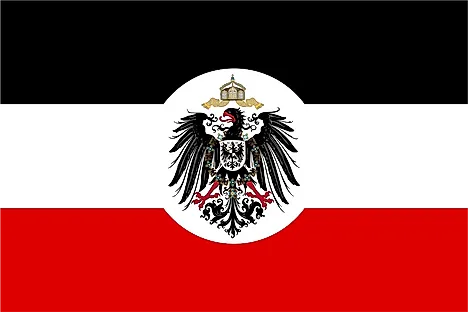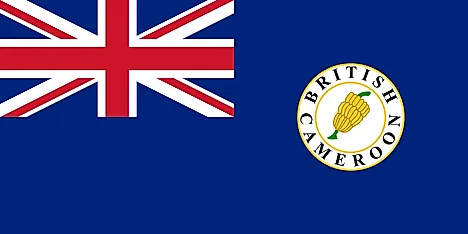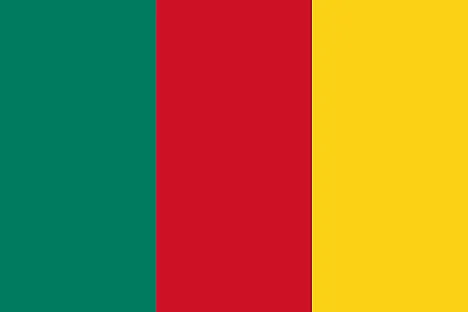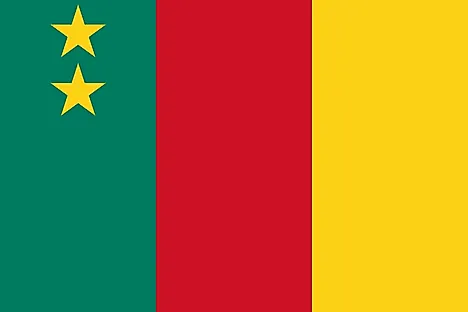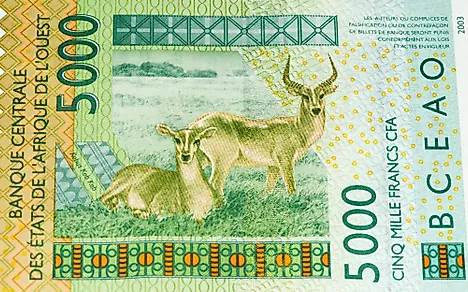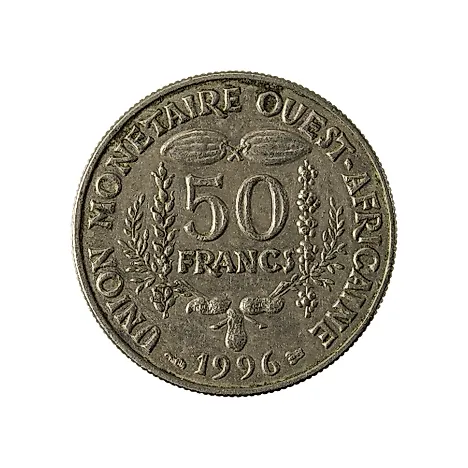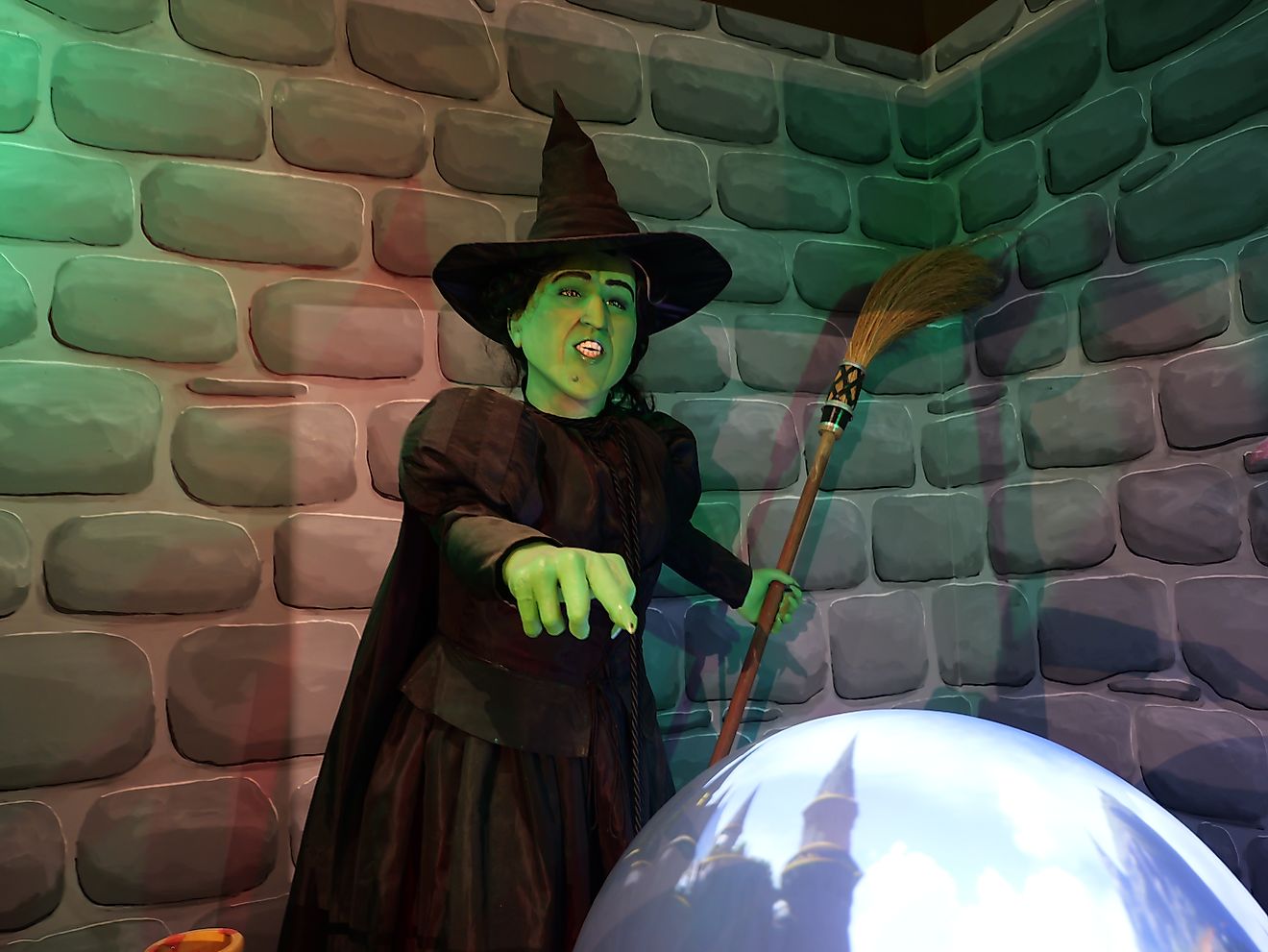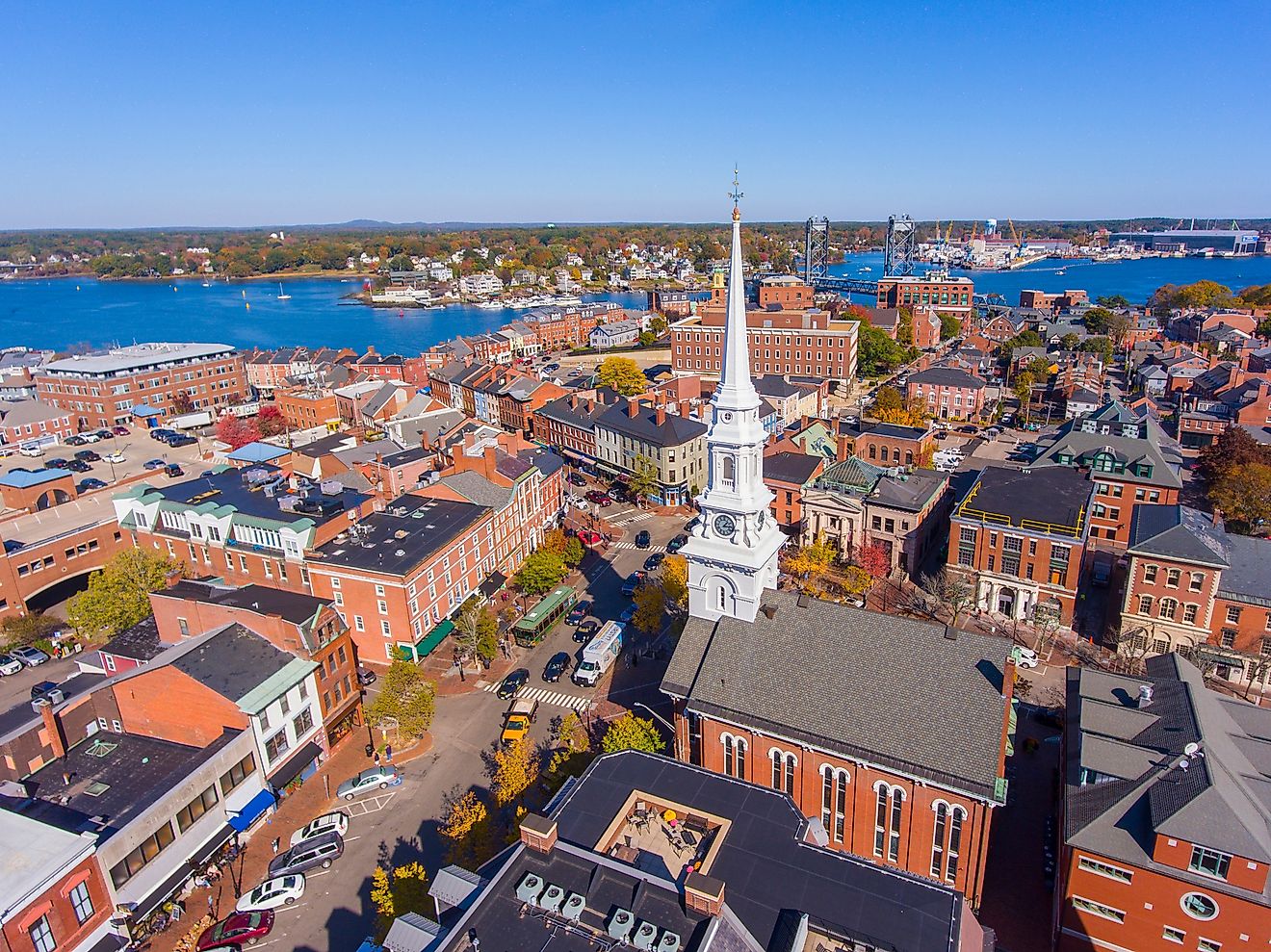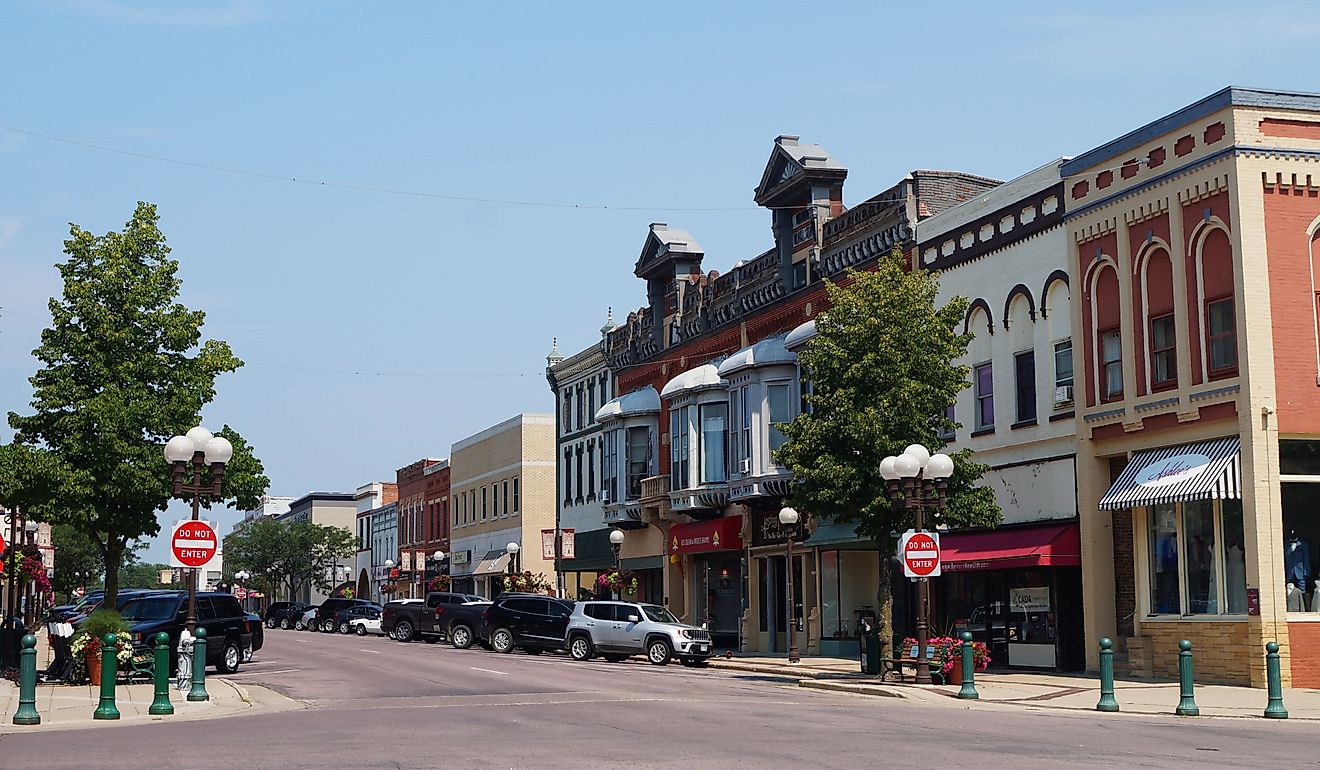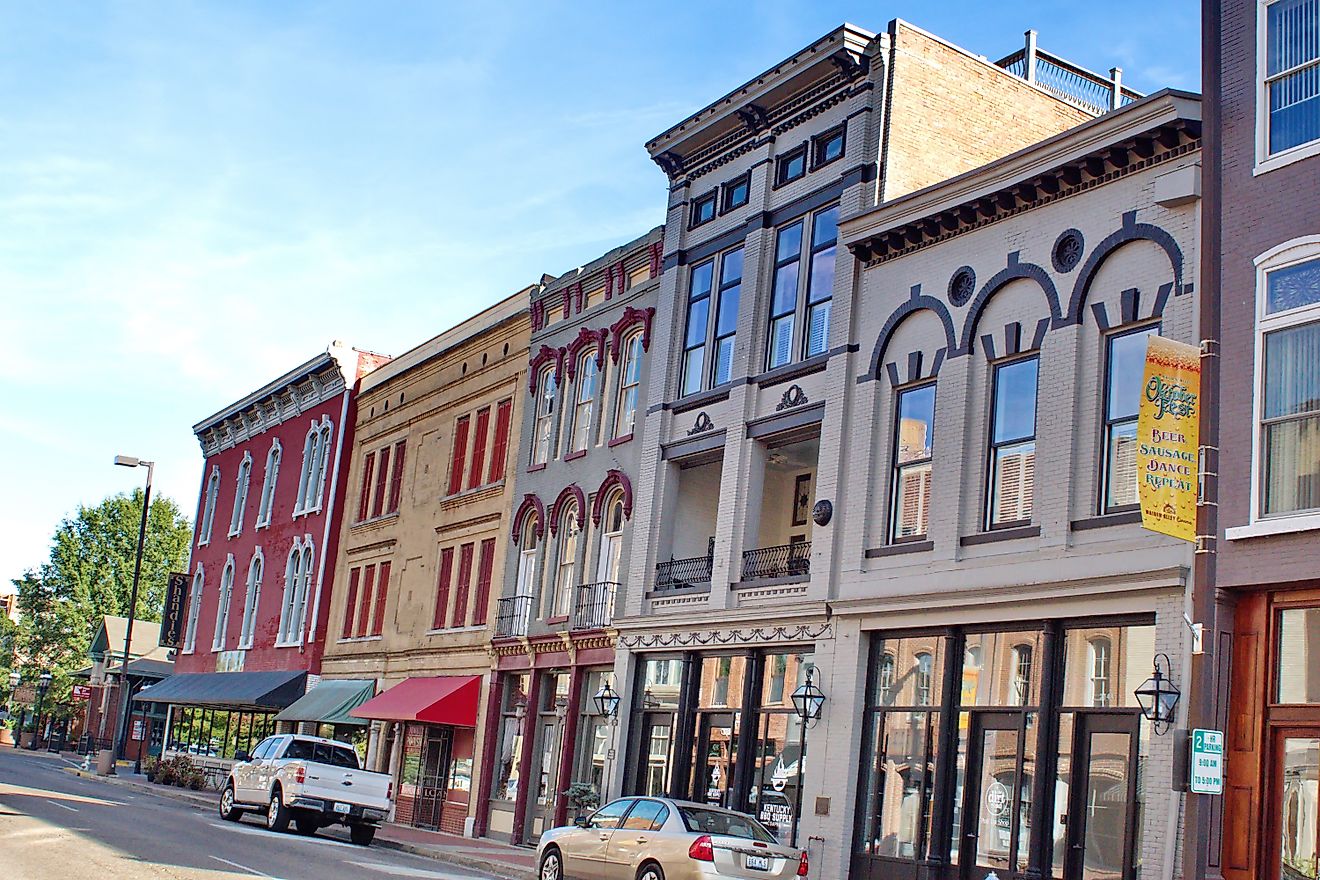Flags, Symbols & Currency of Cameroon
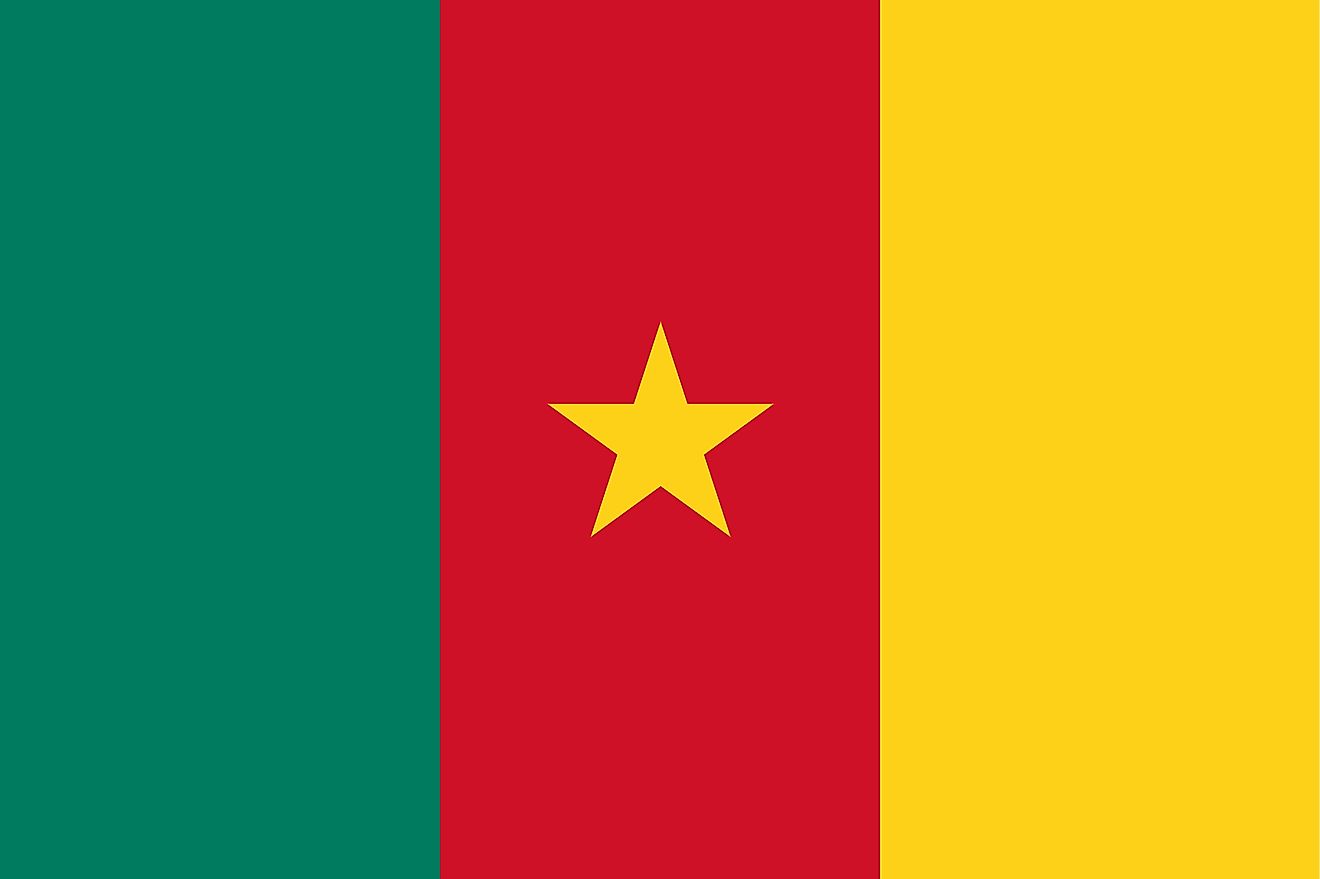
The National Flag of Cameroon was officially adopted on May 20th, 1975. The pattern of the flag represented the “French Tricolore” and the colors of the flag mirrors that of many African flags and was inspired by the official Pan-African colors.
The National Flag of Cameroon is a vertical tricolor and features three equal vertical bands of green (hoist side), red, and yellow. A yellow five-pointed star is placed in the center of the red band. The exact size of the yellow star is not provided by law and therefore appears in varying sizes. The red color symbolizes the independence and unity of the country; the yellow color represents the bright sun, prosperity, and the savannahs located in the northern part of the country. The green color represents hope and the lush vegetation in the country, particularly the forests located in the southern part of the country. The five-pointed star represents the “star of unity”. The flag has a width-to-length proportion ratio of 2:3.
History of The Flag of Cameroon
Cameroon was originally a European (German) colony and had a horizontal tricolor flag featuring black, white, and red bands; centered on the white band was a red shield bearing the resemblance of an elephant’s head. However, after WWI, Germany had lost its claim over the colony of Cameroon and as per the Treaty of Versailles, the two European powers – France and Great Britain, took Cameroon from Germany. The country was divided into two mandates: French Cameroon and British Cameroons. In 1957, French Cameroon adopted a vertical tricolor flag, inspired by the Tricolor French Flag and comprised of green, red, and yellow bands. This flag design was retained after Cameroon gained independence from France in January 1960. In 1961, the Federal Republic of Cameroon was established and adopted a new flag featuring the original tricolor of French Cameroon and two gold stars on the green band’s canton. The current flag was adopted in 1975 after the federal government was replaced by a unitary government, with the only modification being that the two stars were replaced by a single yellow star, that was centered on the red band.
Symbols of Cameroon
The National Coat of Arms of Cameroon
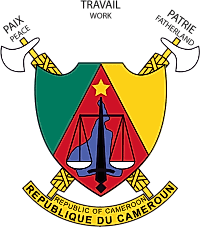
The current official Coat of Arms of the Republic of Cameroon was adopted in 1998. It contains a shield depicting the same color pattern as the national flag. The scales of justice are superimposed on a map of the nation. Two crossed fasces rest behind the shield with a banner displaying the national motto: “Paix, Travail, Patrie” (“Peace, Work, Fatherland”), placed above it. The banner placed below the shield displays the name of the country in French: “Republique Du Cameroun”.
National Motto
(In French): "Paix, Travail, Patrie" ("Peace, Work, Fatherland")
National Anthem
- Anthem Title: "Ô Cameroun berceau de nos ancetres" ("O Cameroon, Cradle of our Forefathers")
- Music Composer: René Djam Afame
- Lyricists: René Djam Afame, Samuel Minkio Bamba and Moise Nyatte Nko'o.
- Date of Adoption: May 10, 1957
"Ô Cameroun berceau de nos ancetres" ("O Cameroon, Cradle of our Forefathers") is the national anthem of Cameroon. The music of the anthem have been composed by René Djam Afame. The lyrics have been authored by René Djam Afame, Samuel Minkio Bamba and Moise Nyatte Nko'o. The anthem was officially adopted on May 10, 1957.
"Ô Cameroun berceau de nos ancêtres" (French)
Ô Cameroun berceau de nos ancêtres,
Va debout et jaloux de ta liberté,
Comme un soleil ton drapeau fier doit être,
Un symbole ardent de foi et d'unité.
Que tous tes enfants du Nord au Sud,
De l'Est à l'Ouest soient tout amour,
Te servir que ce soit le seul but,
Pour remplir leur devoir toujours.
Chorus:
Chère Patrie, Terre chérie,
Tu es notre seul et vrai bonheur,
Notre joie et notre vie,
En toi l'amour et le grand honneur.
Tu es la tombe où dorment nos pères,
Le jardin que nos aïeux ont cultivé.
Nous travaillons pour te rendre prospère,
Un beau jour enfin nous serons arrivés.
De l'Afrique sois fidèle enfant
Et progresse toujours en paix,
Espérant que tes jeunes enfants
T'aimeront sans bornes à jamais.
Chorus
"O Cameroon, Cradle of our Forefathers"
O Cameroon cradle of our ancestors,
Go, upright and jealous of your freedom.
As the sun, let your flag be proud,
A symbol of ardent faith and unity,
May all your children, from North to South
From East to West, live in love!
May serving you be their sole purpose
To fulfill their duty forever.
Chorus:
Dear Fatherland, dear land,
You are our only true happiness.
Our joy, our life
To you, love and the greatest honor.
Thou art the grave where our fathers sleep,
The garden that our ancestors have cultivated.
We work to make you prosperous
One good day we will finally get there.
Be Africa's faithfull child
And always advance peace
Hoping that your children
Love you without limit forever.
Chorus
The Currency of Cameroon is the Central African CFA franc
The current official currency of Cameroon is the Central African CFA franc. The currency is also used in the Central African Republic, Chad, Republic of the Congo, Equatorial Guinea, and Gabon. The Bank of the Central African States which is responsible for the currency is based in Yaoundé, Cameroon. The franc has an equal value to the West African Franc but cannot be used in West Africa. The Central African CFA franc is pegged to the Euro at a standard rate of 1 Euro = CFA 655.957. It has been devalued several times including in 1945 when it was first introduced and most recently in 1994 to help the African States export more.
Coins
CFA coins were introduced to all the French colonies in 1948 except Cameroon. The first coins were issued in denominations of 1 and 2 francs, but the production of the 2 CFA coin was stopped. The 5,10- and 25-franc coins were issued in 1958 to all the colonies including Cameroon. In 1961 and 1966 the 50 and franc coins were introduced respectively. In 1971, each state introduced the 100-franc coins within their borders; the 500-franc coins were later introduced in 1976. The coins were also introduced to Equatorial Guinea after it adopted the currency. 1n 1996, the production of the 100-franc coin was centralized, and in 1998 the Bank of Central African States authorized the production of the 500-franc coin. In 2006, the 2 CFA franc coin was introduced.
Banknotes
When the French introduced the franc, it circulated in the denominations of 5, 10, 20, 100, and 1000 CFA franc. In 1947, a different series of notes that did not bear the name of the colonies was introduced. The 5, 10, 20, 50, 100- and 1000-francs’ notes were the first to circulate before the 500, and 5000 notes were introduced in 1949 and 1952 respectively. In 1968 the 10,000-franc note was introduced, in 1971 the 100-franc note was withdrawn from circulation and replaced by the 100-franc coin. In 1975, each state began producing its own 500, 1000, 5000, and 10,000-franc notes. However, the independent production ceased in 1993 and the state names were replaced by a single letter to distinguish the state where the currency was issued. In 1993, the 2000-franc note was introduced.
Historical Currencies of Cameroon
The CFA Franc was introduced in 1945 by the French to its colonies in Equatorial Africa to replace the French Equatorial African franc. After Independence, the newly formed nations including Cameroon continued the use of the franc.
